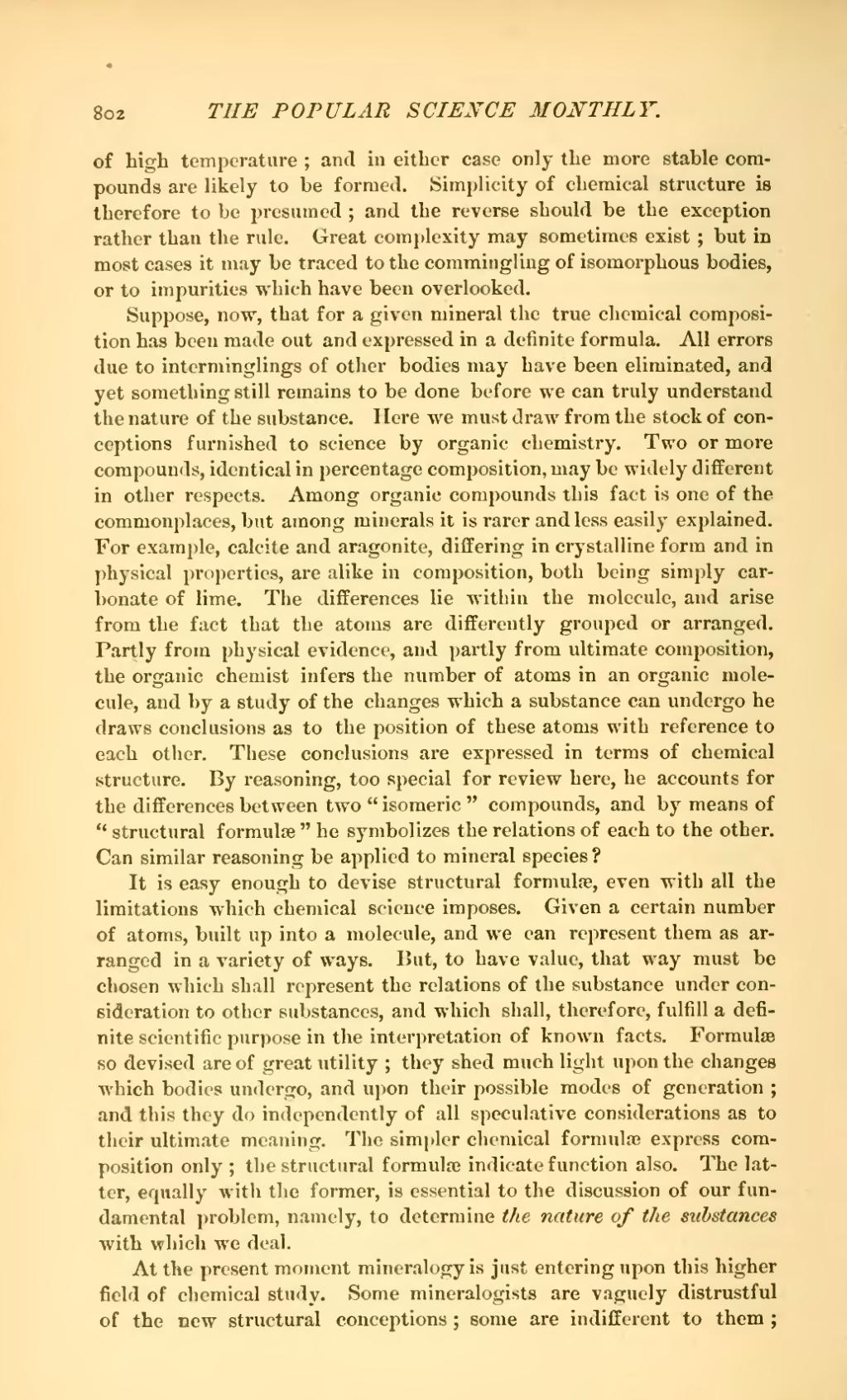of high temperature; and in either case only the more stable compounds are likely to be formed. Simplicity of chemical structure is therefore to be presumed; and the reverse should be the exception rather than the rule. Great complexity may sometimes exist; but in most cases it may be traced to the commingling of isomorphous bodies, or to impurities which have been overlooked.
Suppose, now, that for a given mineral the true chemical composition has been made out and expressed in a definite formula. All errors due to interminglings of other bodies may have been eliminated, and yet something still remains to be done before we can truly understand the nature of the substance. Here we must draw from the stock of conceptions furnished to science by organic chemistry. Two or more compounds, identical in percentage composition, may be widely different in other respects. Among organic compounds this fact is one of the commonplaces, but among minerals it is rarer and less easily explained. For example, calcite and aragonite, differing in crystalline form and in physical properties, are alike in composition, both being simply carbonate of lime. The differences lie within the molecule, and arise from the fact that the atoms are differently grouped or arranged. Partly from physical evidence, and partly from ultimate composition, the organic chemist infers the number of atoms in an organic molecule, and by a study of the changes which a substance can undergo he draws conclusions as to the position of these atoms with reference to each other. These conclusions are expressed in terms of chemical structure. By reasoning, too special for review here, he accounts for the differences between two "isomeric" compounds, and by means of "structural formulæ" he symbolizes the relations of each to the other. Can similar reasoning be applied to mineral species?
It is easy enough to devise structural formulæ, even with all the limitations which chemical science imposes. Given a certain number of atoms, built up into a molecule, and we can represent them as arranged in a variety of ways. But, to have value, that way must be chosen which shall represent the relations of the substance under consideration to other substances, and which shall, therefore, fulfill a definite scientific purpose in the interpretation of known facts. Formulæ so devised are of great utility; they shed much light upon the changes which bodies undergo, and upon their possible modes of generation; and this they do independently of all speculative considerations as to their ultimate meaning. The simpler chemical formulæ express composition only; the structural formulæ indicate function also. The latter, equally with the former, is essential to the discussion of our fundamental problem, namely, to determine the nature of the substances with which we deal.
At the present moment mineralogy is just entering upon this higher field of chemical study. Some mineralogists are vaguely distrustful of the new structural conceptions; some are indifferent to them;

